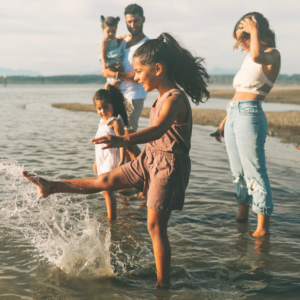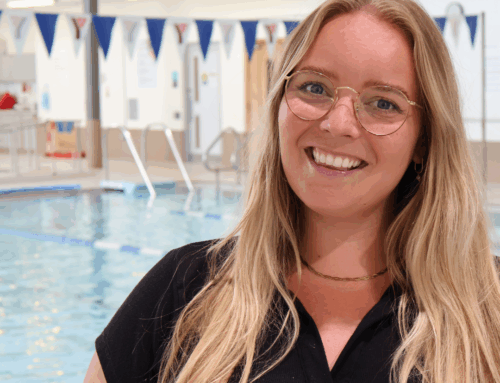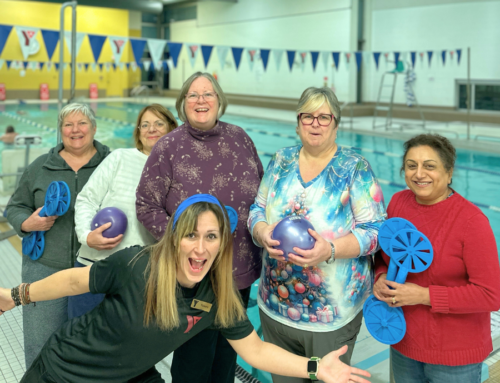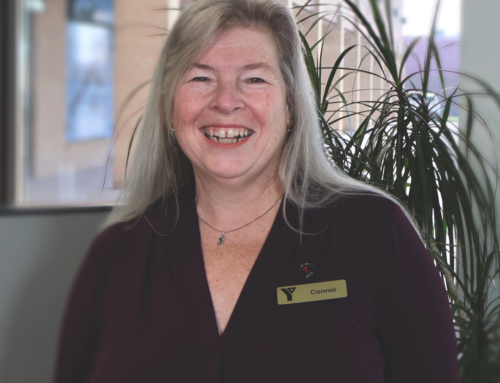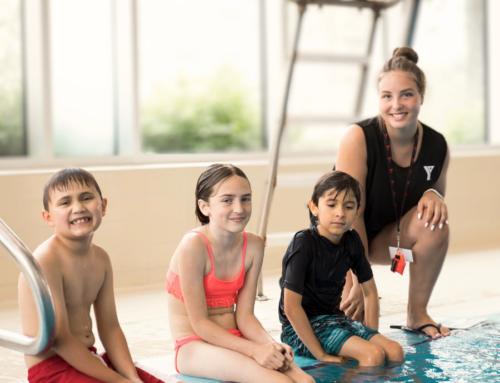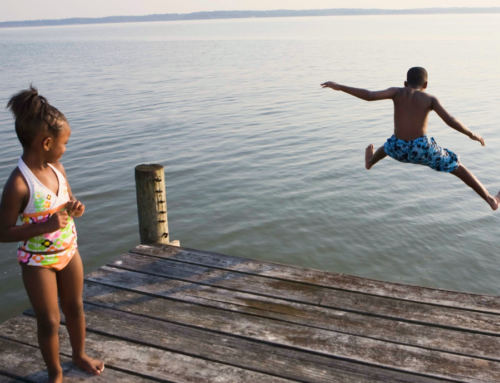Helping Kids to be Happy and Safe Around Water
Republished with permission from ACTIVE FOR LIFE
My family has a summer tradition of pre-dinner swims at our local swimming hole in the Elbow River in Calgary.
Last summer, as my husband got home from work, we hopped on our bikes and headed down to the river to cool off almost every evening. My daughters both loved this family activity and begged to do it. While it resulted in later bedtimes, it was totally worth it: that’s what summer is for, right?
Growing up near the water
When I was growing up, I lived about a hundred metres from the ocean. I learned how to swim and about general water safety from an early age. That experience afforded me a lot of independence within our neighbourhood. Now my daughters are growing up as prairie girls, just up the hill from the river, which is at the heart of our lives. The Elbow River pathway system is our transportation route, and the green space along its shores is ideal for dog walks and fort building. In the summer, we throw rocks, wade, and swim in its waters.
While my children are young, it’s also the ideal place to teach them about fundamental water safety:
- Learning to swim
- Reading the water (current speed, depth)
- Safe entry points
Learning to be safe in and around water
At ages 6 and 3, neither of my kids are proficient swimmers yet, so we choose to make them wear life jackets (PFDs) while in the water. We also only play in stretches of the river where we are familiar with the current and the depth, opting for shallow waters most of the time. There is one calmer, deeper swimming hole at a bend in the river where they can swim within an arm’s reach of an adult.
Another rule we have is that the children wear water shoes because in our urban setting there is often broken glass hiding among the river rocks.
While we actively supervise them at this age and stage, we hope that our teachings will gradually lead to their independence when they are appropriately skilled and old enough to go on adventures in our neighbourhood by themselves.
Benefits of exposure to natural water geographies
There are many reasons why you may want to similarly expose your children to natural water courses in your area. These are just some of the major physical literacy benefits:
- Walking on river rocks or other uneven ground develops balance.
- Throwing rocks in the river (also known as “splooshing” to our preschooler) helps to develop hand-eye coordination.
- The act of swimming, itself, develops overall body coordination and physical strength.
Remember that learning to swim requires practice, practice, and more practice. Finding small moments where you can expose your children to water helps them to learn more every time. If you head down to your nearest river or lake, you will see that all of that time spent at the pool over the winter really pays off with summer fun at the water’s edge.
You will also notice an increase in your child’s confidence as they progress with extra practice. The moments where I have seen my children be the proudest of themselves are when they learned to ride a bike, glide on skis, and move forward by swimming.
Mastering these basic skills strengthens their confidence and adds to their repertoire of movement abilities, helping them with other activities down the road.
I hope that you get the chance to embrace the water as a family adventure this summer. You can also bring a picnic and enjoy the entire evening or afternoon down by the water!


